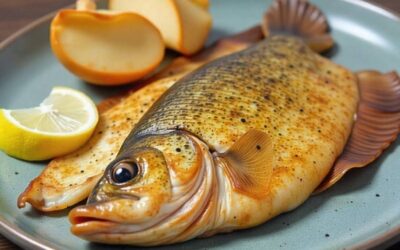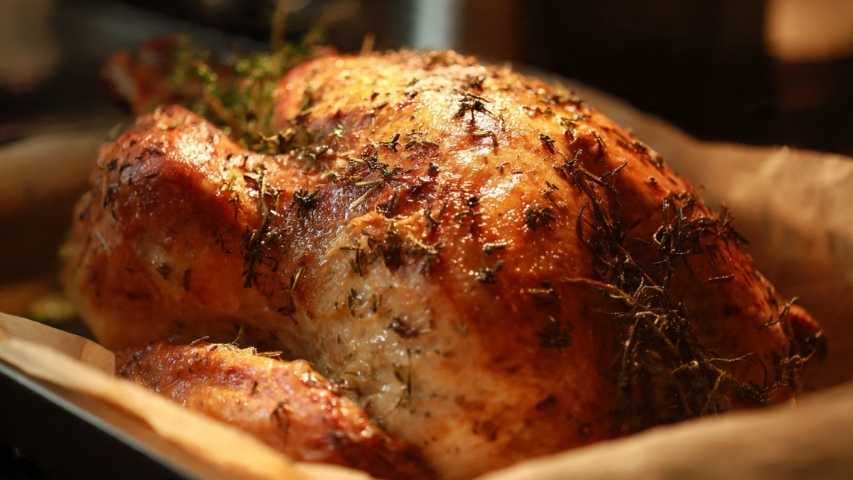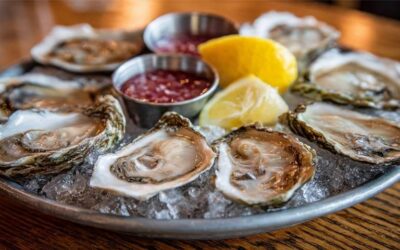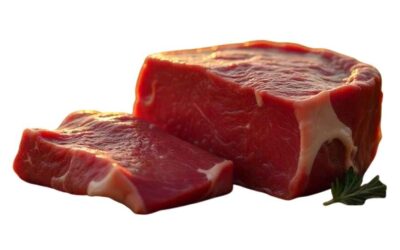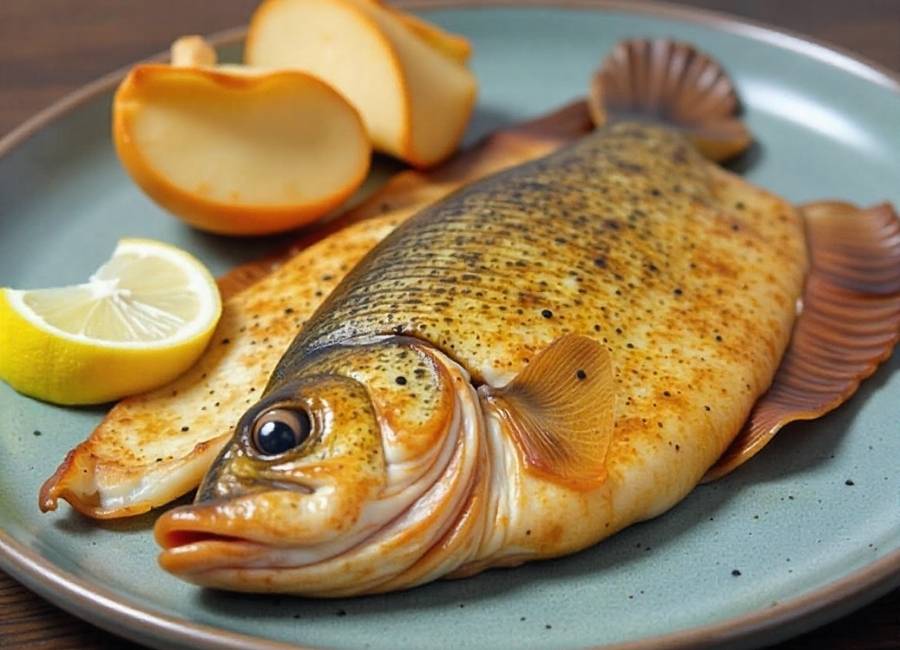If you’ve ever been curious about walleye but weren’t sure what to expect, you’re in good company. Many anglers and seafood fans love this freshwater fish, but plenty of people still wonder about its taste. Walleye is a great choice for anyone new to freshwater fish, with a flavor that appeals to both fans and those who usually skip seafood.
Knowing what walleye tastes like can help you decide whether to buy it at the store or order it at a restaurant. Whether you’re planning a fishing trip or just looking for something new to try, this guide covers walleye’s flavor, texture, and how you can cook it.
The Flavor Profile of Walleye
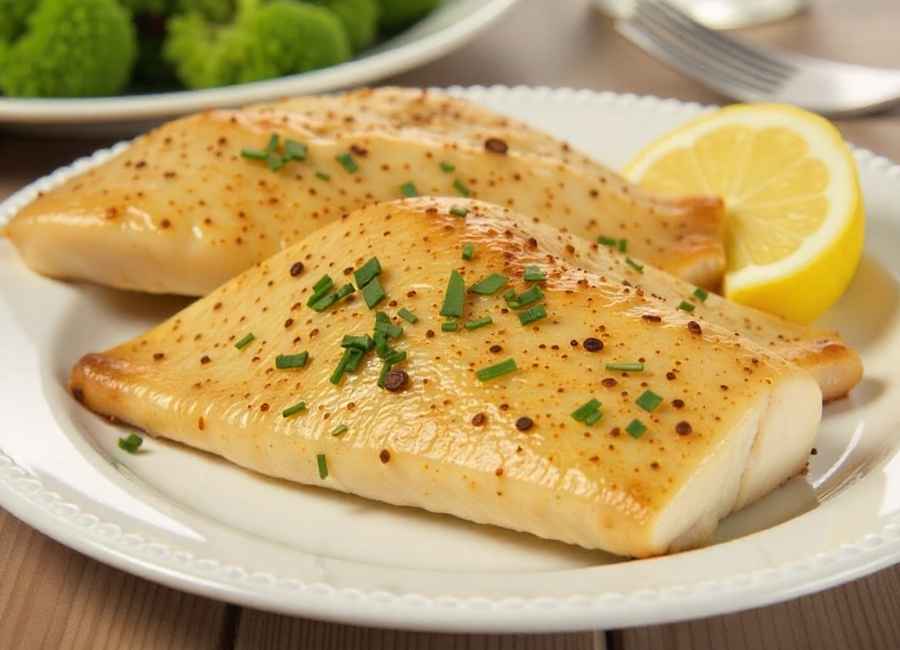
Walleye has a mild, sweet taste that makes it different from many other freshwater fish. (Walleye Culinary Profile, n.d.) Unlike salmon or mackerel, it doesn’t have a strong or “fishy” flavor, so it’s easy on the palate.
The sweetness comes naturally from the fish’s diet and habitat. Walleye primarily feed on smaller fish, insects, and crustaceans in clean, cold waters, which contributes to their delicate flavor. This clean environment translates directly to the taste—you won’t detect an (6+ Secrets: What Does Walleye Taste Like?, n.d.) muddy or earthy undertones that sometimes plague other freshwater species.
People often say walleye tastes buttery, even though it’s not a fatty fish. (Are Walleye Good Eating?, n.d.) This comes from its smooth, rich texture. Walleye has just enough natural oils to stay moist when cooked, but it’s still light and works well with many seasonings and recipes.
Texture and Mouthfeel
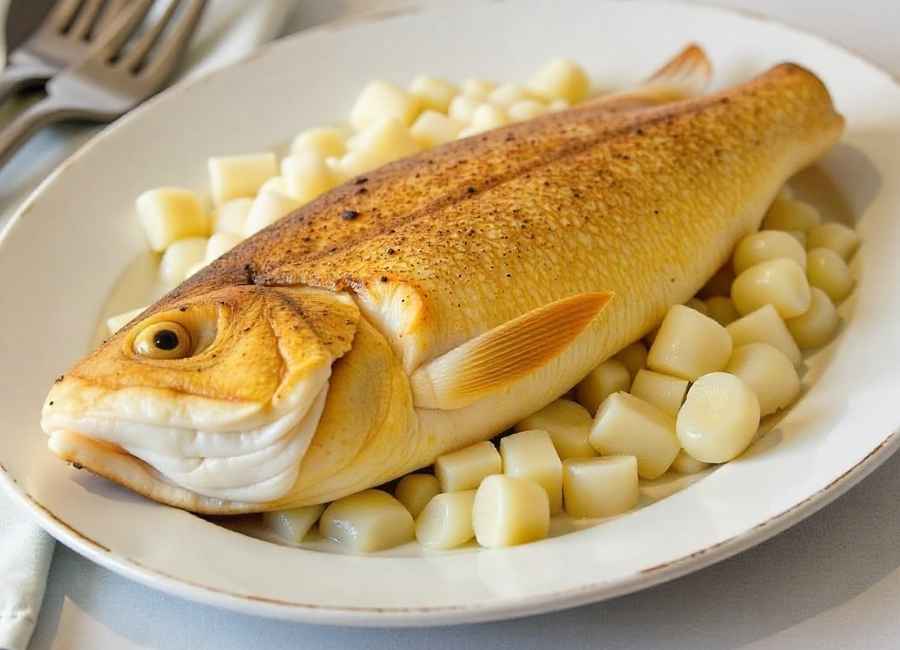
Walleye boasts a firm yet tender texture that flakes beautifully when cooked properly. The meat is white and has a fine-grained structure, making it easy to eat without dealing with tough or chewy portions.
When raw, walleye feels slightly translucent and has a clean appearance. Once cooked, the flesh turns completely white and separates into neat flakes with gentle pressure from a fork. This flaking quality makes walleye excellent for dishes where you want the fish to maintain its structure while still being easy to eat.
The firmness of walleye strikes an ideal. Walleye has just the right firmness. It’s sturdy enough for grilling, baking, frying, or pan-searing without falling apart, but still tender enough to cut easily with a fork. Understanding walleye’s taste becomes clearer when compared to more familiar fish options. Walleye shares similarities with cod in its mild flavor and white flesh, though walleye tends to be slightly sweeter and more delicate. (Walleye vs Cod: Is Walleye Better Than Cod?, 2024)
Compared to bass, walleye offers a cleaner taste without any potential muddy notes. (Walleye Vs. Bass: What Is The Difference?, n.d.) While both are freshwater fish, walleye’s habitat preference for cleaner, deeper waters gives it a distinct advantage in flavor quality.
Against saltwater options like haddock or flounder, walleye holds its own with comparable mildness but offers a unique freshwater character. It lacks the brininess of ocean fish while maintaining the same approachable flavor profile.
For those familiar with perch, walleye can be considered its larger, milder cousin. Both belong to the same fish Family, but walleye grows larger and develops an even more refined taste.
Factors That Influence Walleye’s Taste
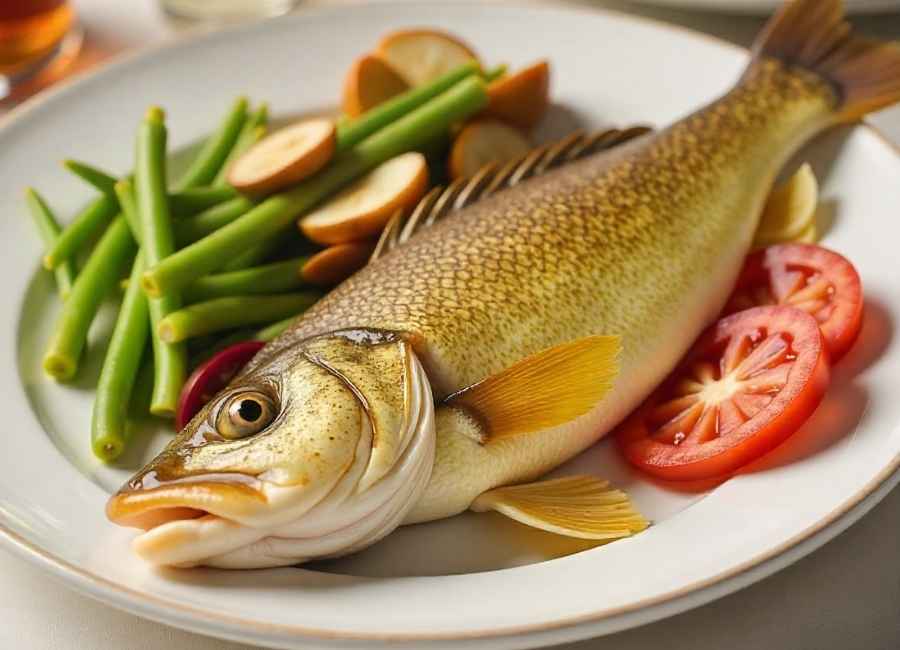
A few things can affect how walleye tastes by the time it reaches your plate. Water quality is especially important. Fish from clean, clear lakes almost always taste better than those from murky or polluted waters.
Seasonal variations also impact taste. Walleye caught in colder months often have firmer flesh and more concentrated flavors. Spring and fall fishing typically yield the best-tasting fish, as walleye are more active and feeding heavily during these periods.
Size matters too. Smaller walleye, typically under three pounds, tend to offer the most delicate flavors. (Are walleye good to eat?, n.d.) Larger fish can still taste excellent but may have slightly stronger flavors and a coarser texture.
Proper handling from catch to kitchen significantly influences the final taste. Fresh walleye should be kept cold and cleaned promptly. Fish that sits too long or isn’t properly iced can develop off-flavors that mask walleye’s naturally sweet taste.
Best Cooking Methods for Walleye
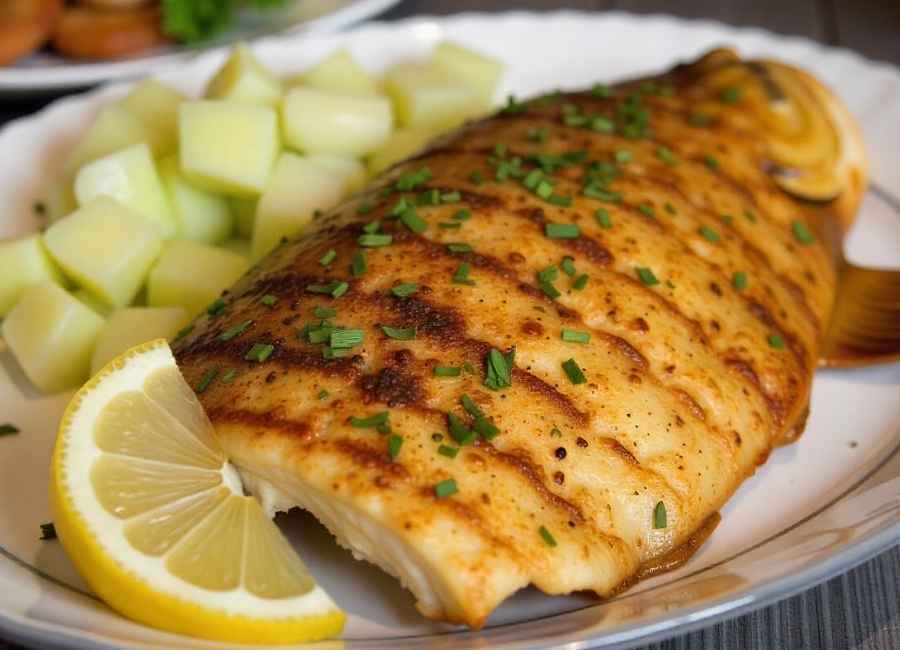
Walleye’s versatility shines through various cooking methods, each highlighting different aspects of its flavor and texture. Pan-frying remains the most popular preparation, creating a golden crust while keeping the interior moist and flaky.
Baking offers a healthier approach that preserves walleye’s delicate flavor. A simple preparation with butter, lemon, and herbs allows the fish’s natural taste to shine. Baking at moderate temperatures prevents overcooking, which can make any fish tough and dry.
Grilling walleye takes a bit of care but can be very rewarding. Use medium heat and make sure the grill grates are well-oiled so the fish doesn’t stick. Grilled walleye picks up a gentle smoky flavor that goes well with its natural sweetness.
Beer batter frying has become synonymous with walleye in many regions. The light, crispy coating provides textural contrast while protecting the delicate fish from overcooking. This preparation method showcases why walleye has earned its reputation as one of the best-eating fish.
Nutritional Benefits
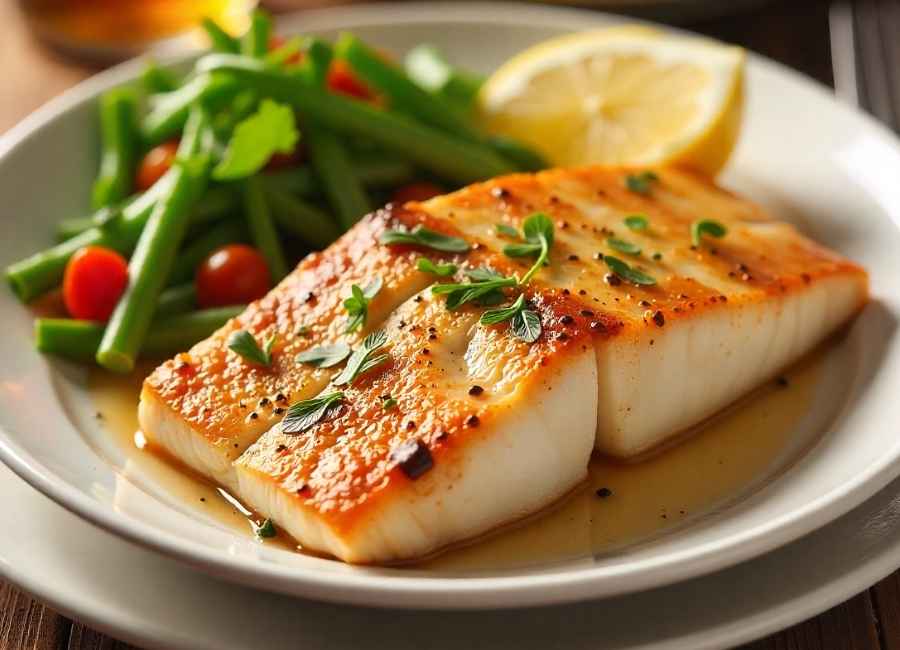
Beyond its appealing taste, walleye offers impressive nutritional value. A four-ounce serving provides approximately 26 grams of high-quality protein while containing only about 130 calories. (Calories in Walleye Pike, cooked with dry heat, n.d.)
Walleye is an excellent source of phosphorus, which supports bone health and energy metabolism. (Fish, pollock, walleye, raw, 1 oz, n.d.) It also provides significant amounts of selenium, an important antioxidant that supports immune function. (Walleye: Complete Nutrition Data, n.d.)
The fish contains beneficial omega-3 fatty acids, though in lower concentrations than fatty fish like salmon. (How Much Omega-3 and Mercury is Found in Different Types of Fish?, n.d.) These healthy fats support heart and brain health while contributing to walleye’s pleasant mouthfeel.
Walleye is naturally low in mercury compared to many larger fish species, making it a safer choice for regular consumption. (Erwin et al., 1997) This low mercury content, combined with its mild flavor, makes it an excellent option for pregnant women and children.
Selecting and Storing Walleye
When purchasing walleye, freshness indicators will help ensure the best flavor. Fresh walleye should have clear, bright eyes and red or pink gills. The flesh should feel firm to the touch and spring back when pressed gently.
Avoid fish with cloudy eyes, dull skin, or any strong fishy odors. Fresh walleye should smell like clean water or have virtually no scent at all. Any ammonia-like or overly strong fish smell indicates the walleye is past its prime.
For frozen walleye, choose packages without ice crystals or signs of freezer burn. Properly frozen walleye can maintain good quality for several months, though fresh is always preferable when available.
Store fresh walleye in the coldest part of your refrigerator and use it within two days of purchase. If you can’t use it immediately, freeze it properly wrapped to maintain quality.
Why Walleye Appeals to Fish Skeptics
Many people who claim to dislike fish find walleye surprisingly enjoyable. Its mild flavor doesn’t trigger the “fishy” taste that turns some people away from seafood. The clean, sweet flavor provides an excellent introduction to eating fish.
The texture also works in the walleye’s favor. Unlike fish with strong textures or those prone to being overly oily, walleye offers a pleasant, familiar mouthfeel that doesn’t challenge hesitant eaters.
Walleye’s versatility in preparation means it can be adapted to suit various preferences. Whether prepared simply with basic seasonings or incorporated into familiar dishes, it accommodates different comfort levels with fish consumption.
Regional Variations and Preparations
Different regions have developed their own walleye traditions that highlight local preferences and cooking styles. The Great Lakes region, particularly Minnesota and Wisconsin, has embraced beer-battered walleye as a signature preparation. (Crispy Beer-Battered Fried Walleye with Mango Sauce, 2024)
In Canada, walleye is often cooked in rustic ways, like grilling over an open fire or simple pan-frying. These methods let the natural quality of the fish stand out.
Northern U.S. states frequently prepare walleye with regional ingredients like wild rice or maple syrup, creating unique flavor combinations that complement the fish’s natural sweetness.
Restaurant preparations vary widely, from upscale establishments serving walleye with sophisticated sauces to casual fish fries where simplicity takes center stage.
Making the Most of Walleye’s Flavor
To fully appreciate walleye’s taste, avoid overwhelming it with strong seasonings or complicated preparations. Simple approaches often yield the best results, allowing the fish’s natural flavor to shine.
Lemon, butter, and fresh herbs create classic combinations that enhance rather than mask walleye’s taste. Salt and pepper provide sufficient seasoning for many preparations, though garlic and paprika work well for those wanting additional flavor.
Cooking temperature and timing matter significantly. Walleye cooks quickly and can become dry if overdone. The fish is ready when it flakes easily and reaches an internal temperature of 145°F.
Your Next Culinary Adventure Awaits
Walleye’s combination of mild flavor, excellent texture, and nutritional benefits makes it worthy of consideration for your next meal. Whether you’re an experienced fish lover or someone typically hesitant about seafood, walleye offers an approachable and rewarding eating experience.
Consider starting with a simple preparation to appreciate the fish’s natural qualities fully. Visit local fish markets or restaurants known for their walleye preparations to experience this freshwater favorite at its best. Once you discover walleye’s appealing taste and versatility, you’ll understand why it has earned such a devoted following among fish enthusiasts.










